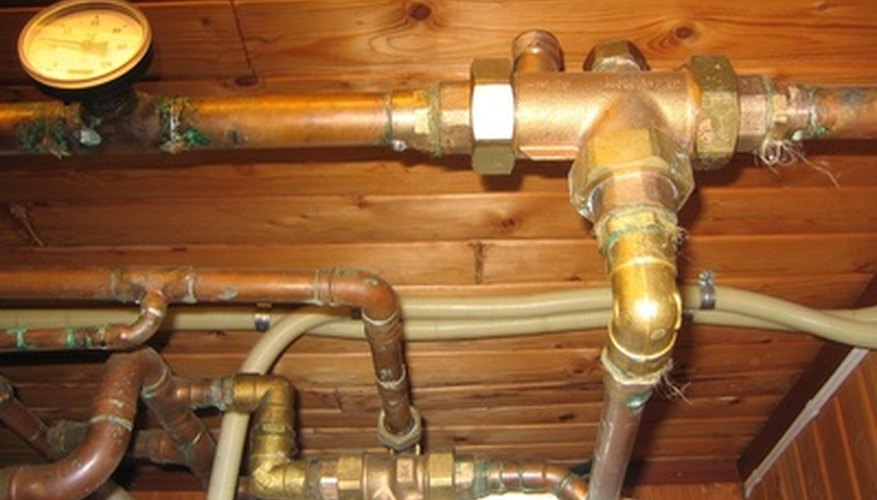An immersion heater is a type of electrical resistance heating element that produces heat by resisting the flow of electrical current. The heater is a separate unit that the installer plugs into a water heater where the element sits suspended in the water. Electricity is an expensive way to heat water, and natural gas heaters are more common, and homeowners often use immersion heater components as supplemental heating in case of emergencies. Immersion heaters are subject to problems associated with electrical heating elements.
Insulation Breakdown
Immersion heating elements eventually wear down, and one of the most common problems is caused by its insulation breaking down. This insulation protects the different coils of the heating element from intersecting. Often, the heating insulation wears away and allows the ground and live wires to exchange current, which creates uneven currents and often blows fuses.
Splitting
As immersion heaters become even older (or if it has natural flaws), the coating around the element can crack and allow water to access the inner metal core of the element. This causes the element to corrode very quickly and fail. The element usually continues to operate for a short time by passing current through the water.
Overheating
Sometimes immersion heating elements can overheat. When this happens, the element often burns the thermostat, destroying the sensor and even parts of the cables that it uses. When the thermostat is burnt, it cannot read the temperature of the water effectively and will not send any signals to the heater, resulting in failure of the heater.
Placement Issues
Because an installer must place the immersion water heater into the water itself, there is always a chance that it will be placed in the wrong position. In water tanks, a wrongly placed immersion heater will improperly heat the water and the water will be either too hot or too cold. For other immersion heaters used for smaller applications, an improperly placed element may be exposed to air above the water line and burn out.
Scale
Scale is a layer of minerals that coats metal when hard water is exposed to a high degree of heat. Hard water is saturated with mineral elements from the ground source. These minerals tend to stay in the water through the plumbing system, but with intense heat, the minerals separate and create a limestone deposit layer. When this scale layer forms on the element, it can inhibit the heating process and creating difficulties with heating.
- Scale is a layer of minerals that coats metal when hard water is exposed to a high degree of heat.
- These minerals tend to stay in the water through the plumbing system, but with intense heat, the minerals separate and create a limestone deposit layer.
